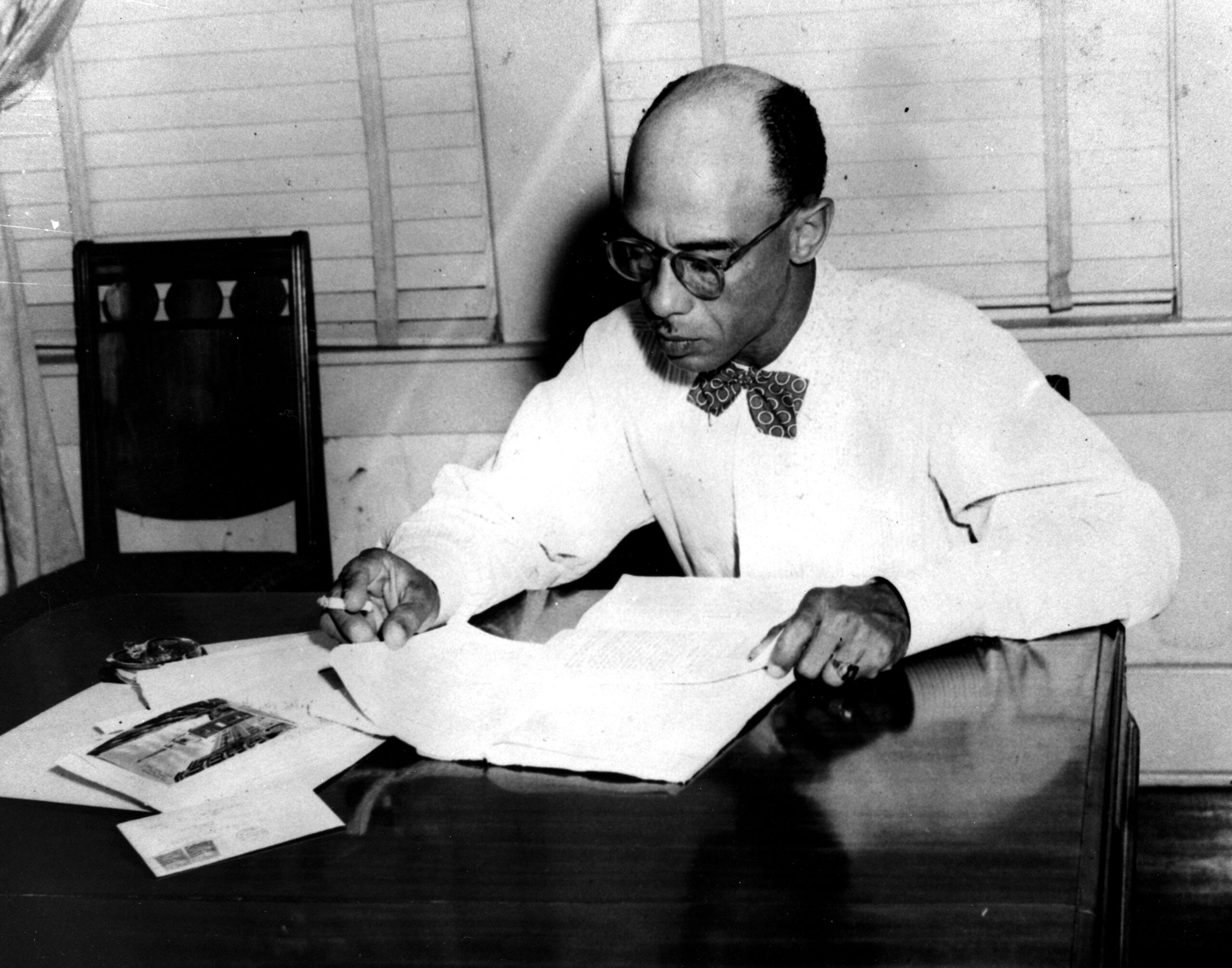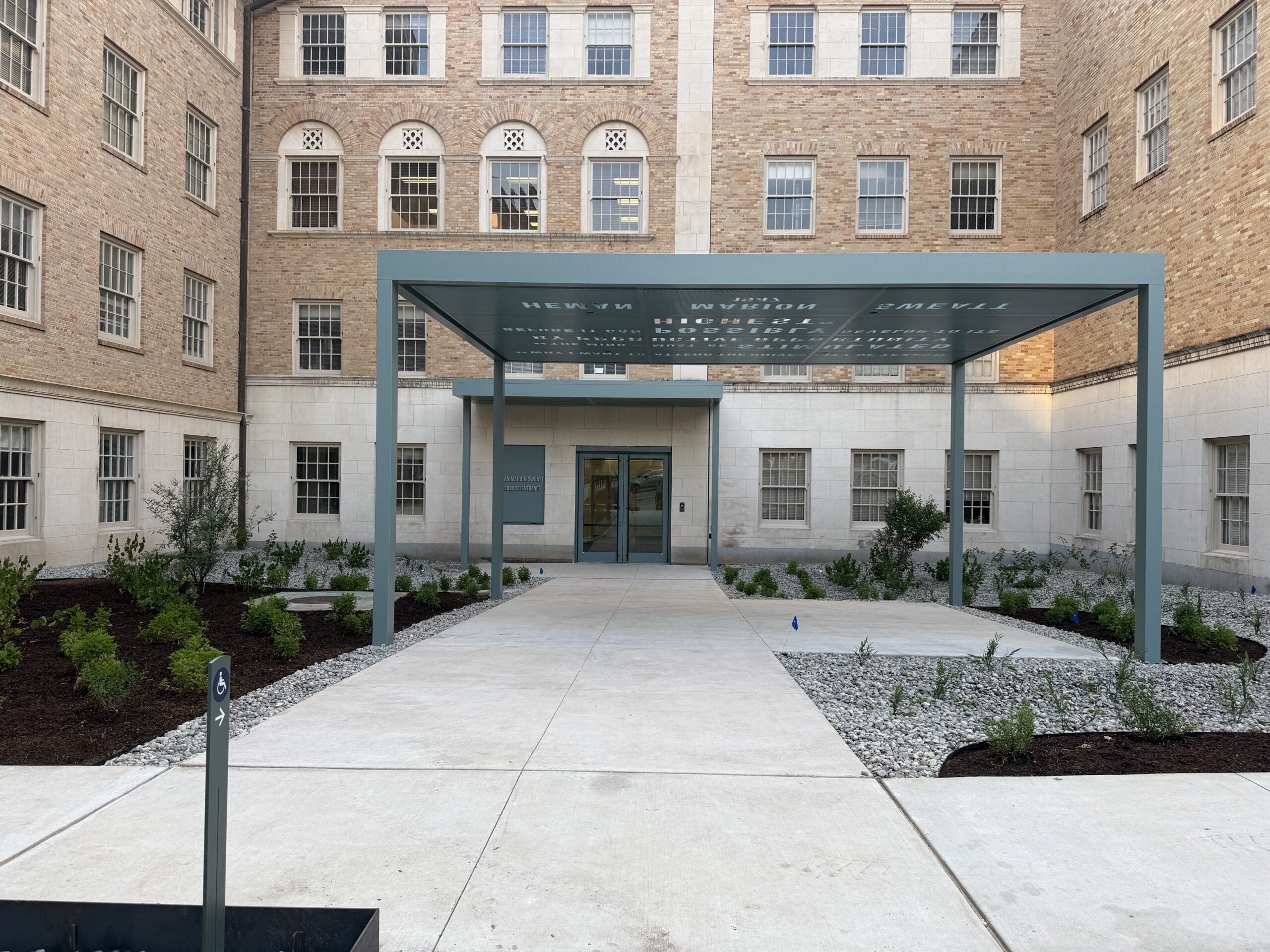Sweatt v. Painter: Entry & Gallery
The Heman Marion Sweatt Celebrated Entrance and the Sweatt v. Painter Gallery in T.S. Painter Hall, commemorates the historic effort to open the doors of the state’s flagship University to African American graduate students in 1950. The U.S. Supreme Court’s decision in Sweatt v. Painter was a watershed in the national struggles to end racial segregation in higher education, and it was also the first step in making the University of Texas a school for all Texans. The first few Black undergraduates began entering select fields at the University in 1954. However, it was not until the Fall of 1956 that The Precursors, the first Freshman class of Black undergraduates could enroll in all fields of study. On May 16, 1964 the UT Board of Regents declared “total integration” of all remaining aspects of the University, including: dining, housing, faculty hiring, athletics and extra-curricular activities.
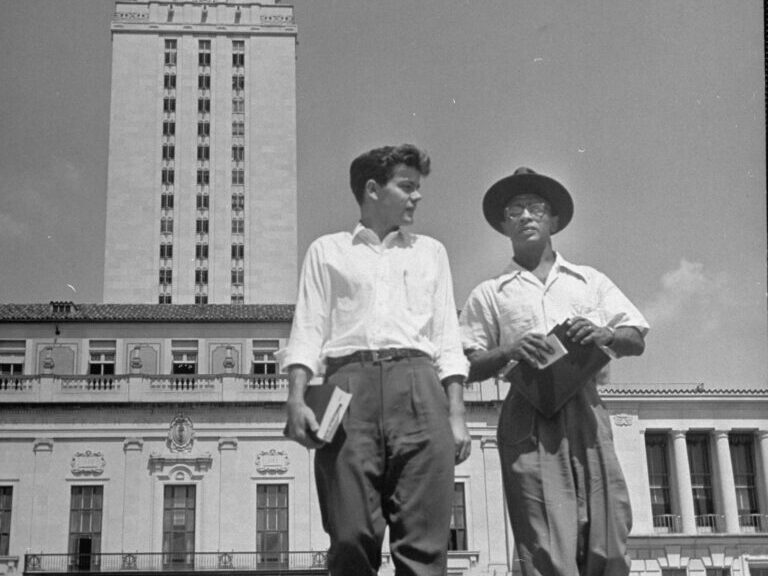
Photo by Joe Scherschel, 1950, The LIFE Picture Collection/Shutterstock (12147836a).
Daily Texan Editor Ronnie Duggar & Heman Marion Sweatt, after his first law class at the University of Texas in September 1950.
Plan Your Visit
Hours
Monday – Friday | 8 AM – 5 PM
See UT Holiday Schedule for campus closure dates.
Free Admission
Open to the Public
Location
103 W. 24th St, Austin, TS 78712 | 2nd Floor (ground level) of the T.S. Painter Hall (PAI)
Accessible entrance is the Heman Marion Sweatt Celebrated Entrance on the west side of the T.S. Painter Hall located off of University Ave.
Parking
Preferred Parking is in the San Antonio Garage located at
2420 San Antonio Street
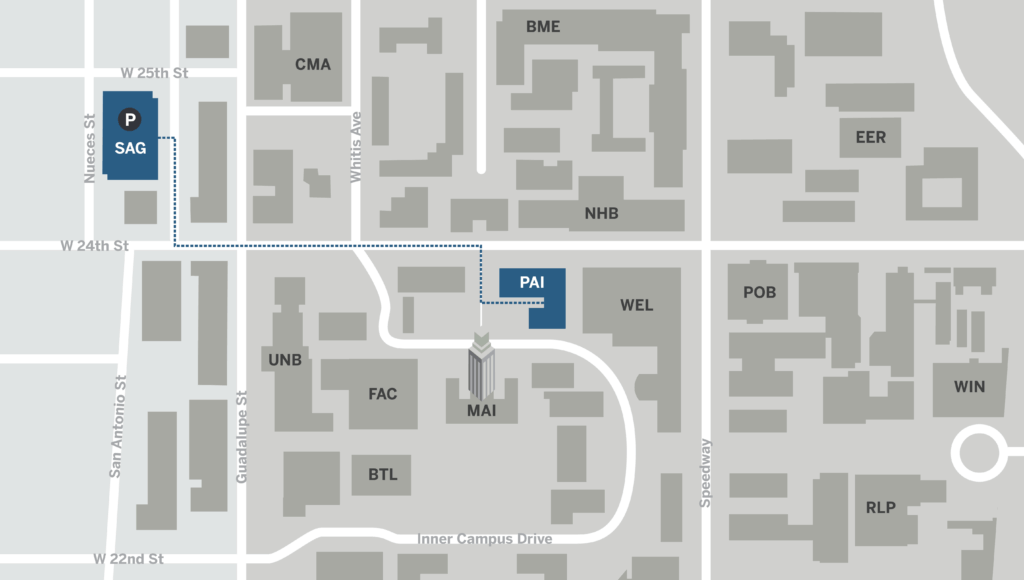
The Sweatt v. Painter Gallery was researched and organized by the Contextualization & Commemoration Initiative. The exhibit design was created by Liberal Arts Instructional Technology Services. A special thanks to the faculty and staff of the College of Natural Sciences, the staff at the Briscoe Center for American History and the Archives and Special Collections at the Tarlton Law Library Jamail Center for Legal Research at the University of Texas School of Law.
Explore & Learn More
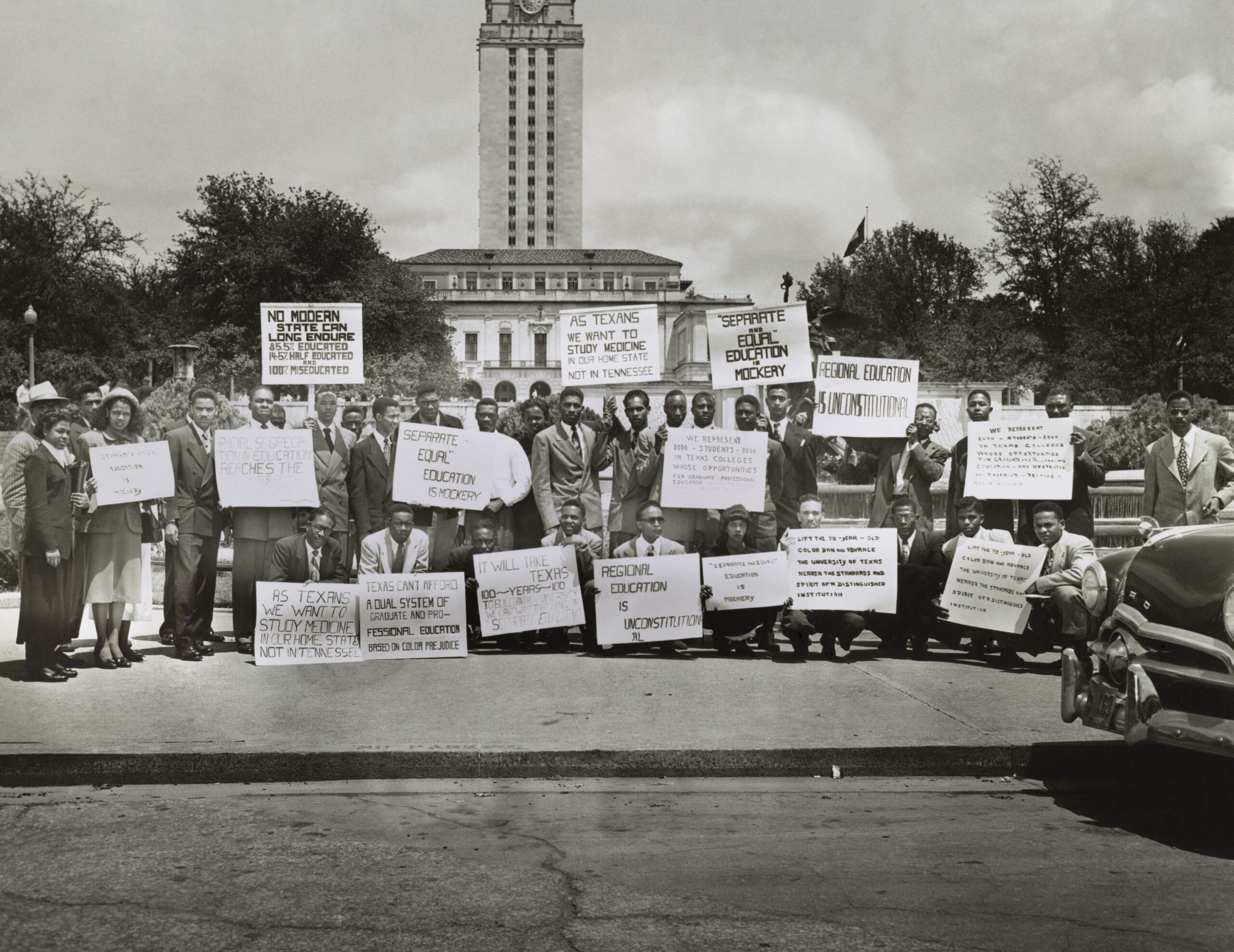
Learn more about Heman Marion Sweatt and other key figures and their legal struggle for racial equity in higher education at UT and in the nation.
